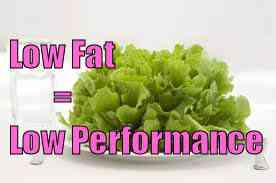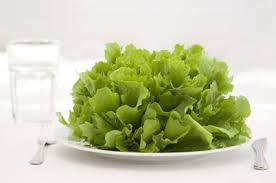
.Why Is A Fat-Free Diet Dangerous With An Active Lifestyle?
 Not so long ago, a large percentage of coaches and fitness experts preached the benefits of maintaining a low-fat diet to their performance athletes and clients. It used to be the belief of many that all fat was bad. As a result, a diet that consisted of no more than 20% fat was considered optimal. However, in recent years, studies have shown that maintaining a diet with too little fat could hinder overall performance in endurance-based sports and activities.
Not so long ago, a large percentage of coaches and fitness experts preached the benefits of maintaining a low-fat diet to their performance athletes and clients. It used to be the belief of many that all fat was bad. As a result, a diet that consisted of no more than 20% fat was considered optimal. However, in recent years, studies have shown that maintaining a diet with too little fat could hinder overall performance in endurance-based sports and activities.
The Disadvantages Of Too Little Fat
Because of the belief that all fat was bad, diets with too low fat content and low-fat foods swept the country. It was believed that maintaining a low-fat diet would lead to better health and overall performance. However, as research advanced and new studies were conducted, some pretty surprising discoveries were made.
Maintaining a diet low in fats for an extended period could lead to some fairly severe health and fitness concerns, including:
- Poor vitamin and nutrient absorption
- Adverse effects on mental health and performance
- Lower energy levels
- Higher risk of heart disease
- High cholesterol
- Increased risk of overeating
But that’s not all. These same studies also uncovered certain critical benefits to maintaining a diet that was higher in fat, specifically in regards to performance and endurance.
The Advantages Of A Higher Fat Diet
For instance, one study performed by the University of Buffalo found that individuals who followed a diet that consisted of 30% fats significantly decreased their chances of injury in comparison to individuals who followed a diet with too little fat.
Additionally, another study showed that a diet higher in fat improved fat oxidation during activities that required longer endurance, thus increasing overall endurance levels in those individuals.
As a result of these findings, and several others like it, the benefits of a diet higher in fats about overall performance and endurance became more accepted, especially in the performance sports communities.
 The Relation Between Carbohydrates, Fats, and Increased Performance
The Relation Between Carbohydrates, Fats, and Increased Performance
However, there’s a catch (there always is, right?).
Another study that focused on the effects of carbohydrates and fat on athletic performance found that high carbohydrate diets performed slightly better during timed trial runs while high-fat diets performed better during longer training sessions and events.
What did that mean for motocross and enduro? Initially, it meant that you either had to sacrifice the increased endurance during training (from a high-fat diet) or the increased energy during an event or trial (from a high-carb diet). You couldn’t have the benefits of both.
 Fortunately, that all changed when further research uncovered that a rider could indeed benefit from both diets by maintaining a diet higher in fats during the bulk of training and switching to a high-carb diet a few days (approximately 3-5) before an event. The reason this works is that the body goes through a “loading phase” when a high-carb diet is introduced.
Fortunately, that all changed when further research uncovered that a rider could indeed benefit from both diets by maintaining a diet higher in fats during the bulk of training and switching to a high-carb diet a few days (approximately 3-5) before an event. The reason this works is that the body goes through a “loading phase” when a high-carb diet is introduced.
During the loading phase, the benefits of your high-fat diet remain in effect. As a result, you get both the energy from the increased carb intake and the increased endurance from the high fat intake.
How to Ensure You Avoid The Dangers Of A Low Fat Diet
The best way to ensure you’re getting enough fat in your rider nutrition diet plan is to monitor your fat intake daily, while also adhering to the following guidelines:
- Make sure your diet consists of between 30-35% of daily fats intake (until a few days before race day, where you’ll change it to 30-35% in carbohydrates).
- Make sure the majority of your fat intake comes from good fat. (Which we’ll cover later in this series.)
In Part 2 of Fitness Fats, we’ll look at the dangers of consuming too much fat in your diet, and how it can not only hinder your performance but also jeopardize your overall health
If you have any questions or anything to add, please leave them in the comments or on our FaceBook page!
Keep Reading – Part 2: Effects of Too Much Fat In Diet
